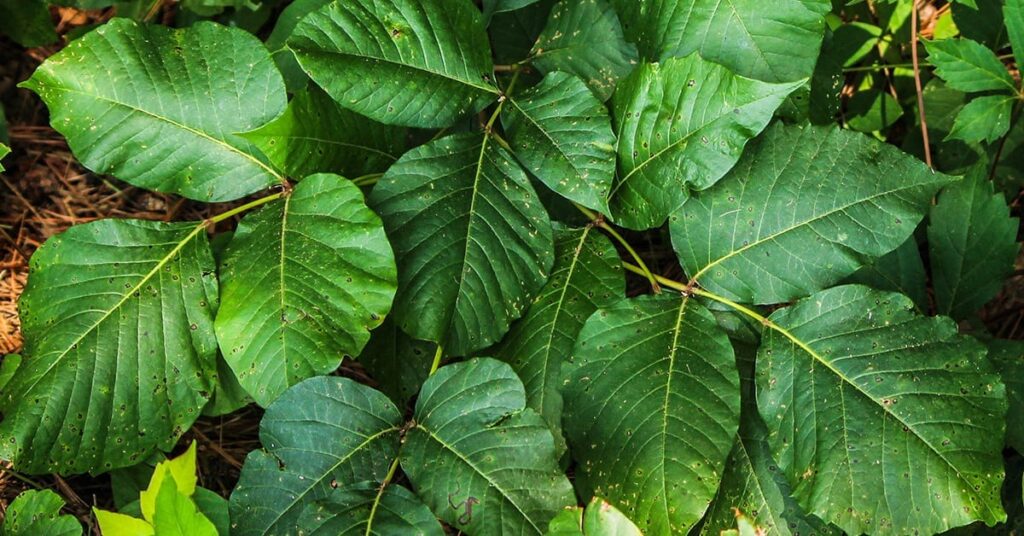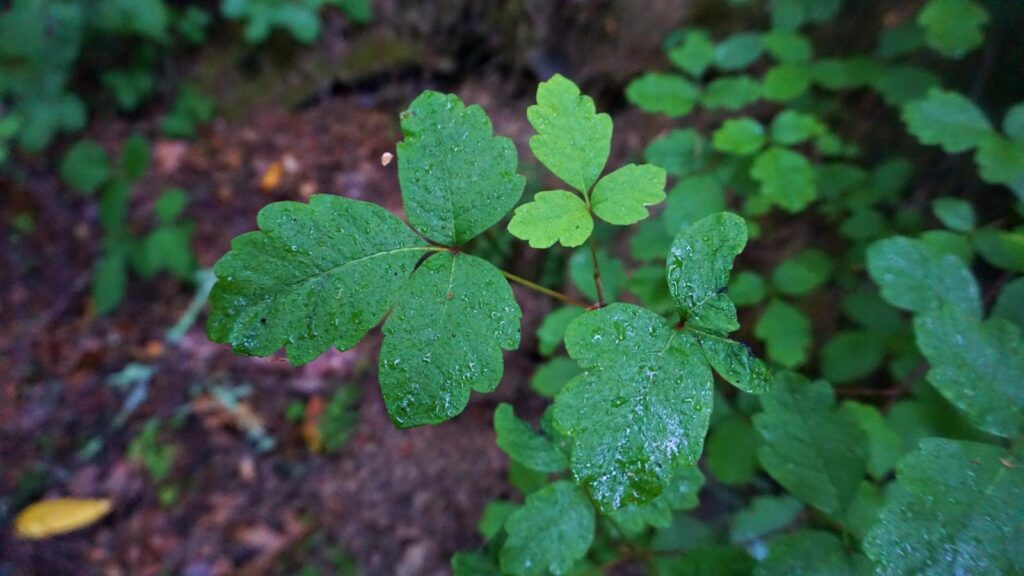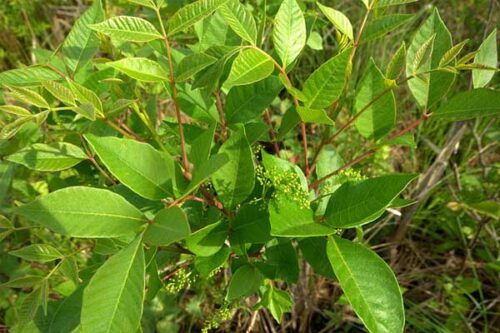Poisonous plants are a danger to humans and animals alike. In Virginia, there are many poisonous plants that can be found in not only in the wild but also in your backyard. There are many poisonous plants, including poison ivy, poison oak, and poison sumac. These plants can cause severe skin reactions and, in some cases, death. It is important to be aware of these dangers when spending time outdoors in Virginia.
5 of The Most Common Poisonous Plants In Virginia
The following is a list of some of the potentially poisonous plants you could find in the state of Virginia. Keep in mind that the local areas could have other poisonous plants as well.
Poison Ivy
If you’re planning on spending time outdoors in Virginia, it’s important to be aware of the dangers posed by poisonous plants. Exposure to poison ivy, which is one of the most common poisonous plants in the state, can cause severe irritation and swelling. The affected area should be washed with soap and water as soon as possible if you come into contact with poison ivy.

It is also recommended to avoid scratching the area since this can aggravate it. If you have a severe reaction, you may need to seek medical attention.
By being aware of the dangers posed by poison ivy and taking steps to avoid exposure, you can enjoy your time outdoors without worry.
Poison oak
Poison oak (Toxicodendron radicans) is a woody shrub that is common in Virginia and other southeastern states. Upon contact with the skin, the oil in the plant causes an allergic reaction known as urushiol. Symptoms of a poison oak reaction include itching, redness, and swelling. In some cases, the reaction can be severe and lead to blisters and difficulty breathing.

If you come into contact with poison oak, you should wash the area with soap and water as soon as possible. Additionally, refrain from scratching the area because doing so increases your chance of getting an infection.
Poison sumac
Poison sumac (Toxicodendron vernix) is a woody shrub or small tree that is native to North America. It is found in wet, wooded areas in the eastern United States, from Maine to Virginia, south to Florida, and west to Texas. Poison sumac grows in swamps, bogs, and along streams and lakes.

A severe allergic reaction can occur in some people when they come into contact with the plant. The plant produces a white, waxy substance called urushiol. This substance is found in the leaves, stems, and roots of the plant. When the plant is damaged, the urushiol is released into the air and can be inhaled or come into contact with the skin.
If you come into contact with poison sumac, you may develop a red, itchy rash. The rash is caused by an allergic reaction to the urushiol. The rash can be very severe and can even lead to blisters. In some cases, the rash can be so severe that it can cause death.
If you think you have come into contact with poison sumac, you should wash the area with soap and water as soon as possible. You should also try to avoid coming into contact with the plant again.
Jimsonweed
Spring is in the air, and that means it’s time to start thinking about your garden. If you live in Virginia, you might be wondering which plants are safe to grow and which ones are poisonous. Jimsonweed (Datura stramonium) is a poisonous plant that is native to Virginia.

It can be found in fields, roadsides, and other open areas. The plant is easily identified by its large, white flowers. Jimsonweed is considered a noxious weed in Virginia and is on the state’s list of controlled plants.
The plant contains a toxic compound called atropine. Atropine can cause symptoms such as Dilated pupils, Dry mouth, Flushed skin, Hallucinations, High blood pressure, and Rapid heart rate. Jimsonweed is especially dangerous to children and pets. If you suspect that your child or pet has eaten any part of this plant, seek medical attention immediately.
Virginia creeper
Virginia creeper (Parthenocissus quinquefolia) is a common woody vine in the eastern United States. It is often found growing in old fields, forest edges, and roadsides. The vine has small, dark green leaves with five leaflets. The leaves turn red in the fall. The small, greenish-white flowers are followed by dark blue berries. The berries are poisonous to humans but are eaten by birds.

Grapes are a family of plants that include the Virginia creeper. The leaves and berries contain compounds that can cause stomach upset and vomiting if eaten in large quantities. All parts of the plant contain these compounds, but the berries have the highest concentration. Small children and pets are at the greatest risk of poisoning because they are more likely to eat berries.
How can you identify a poisonous plant?
There are many poisonous plants out there, and it can be hard to know which ones to avoid. Here are some tips on how to identify a poisonous plant:
1. Look for warning signs. Some poisonous plants will have warning signs posted near them. These signs can be helpful in identifying which plants to avoid.
2. Ask someone for help. If you’re not sure about a plant, ask a park ranger or another expert for help. They will be able to tell you whether the plant is poisonous or not.
3. Avoid touching the plant. If you come into contact with a poisonous plant, it can cause skin irritation or even burns. Be sure to wash the area well with soap and water if you do come into contact with a poisonous plant.
4. Learn about common poisonous plants. Familiarizing yourself with some of the most common poisonous plants can help you avoid them. Poids ivy, poison oak, and poison sumac are some of the most common poisonous plants.
5. If you suspect a plant is poisonous, don’t take any chances. Avoid the plant and call poison control immediately.
How can you treat someone who has been poisoned by a plant?
When it comes to plants, there are a wide variety of poisonous ones that can pose a serious threat to your health if ingested. While some plants may not be deadly, they can still cause serious illness or discomfort if you come into contact with them. If you believe that you or someone else has been poisoned by a plant, it is important to seek medical attention immediately.
There are a number of different ways that a plant can poison someone. The most common is by ingesting the plant, either through eating it or touching it and then putting your hands in your mouth. Plants can also poison someone through their sap or by coming into contact with the plant’s leaves or flowers. In rare cases, a plant can release toxins into the air that can be inhaled.
Symptoms of plant poisoning can vary depending on the type of plant and the severity of the exposure. Some common symptoms include nausea, vomiting, diarrhea, abdominal pain, and dizziness. In more severe cases, plant poisoning can lead to seizures, coma, and even death.
Seek emergency medical assistance if you or someone you know has had symptoms consistent with exposure to a poisonous plant. If the victim has consumed any of the plants, it is crucial that they be made to vomit and then given a large glass of water.
There should be a thorough washing with soap and water if the individual has come into touch with the plant’s sap or leaves. An emergency trip to the doctor is needed if there is any suspicion that the person has breathed the plant’s poisons.
Conclusion
It is important to be aware of the poisonous plants that can be found in Virginia. By taking the time to learn about these plants, you can help keep yourself and your family safe when spending time outdoors. If you suspect that you or someone you know has been poisoned by a plant, seek medical attention immediately.